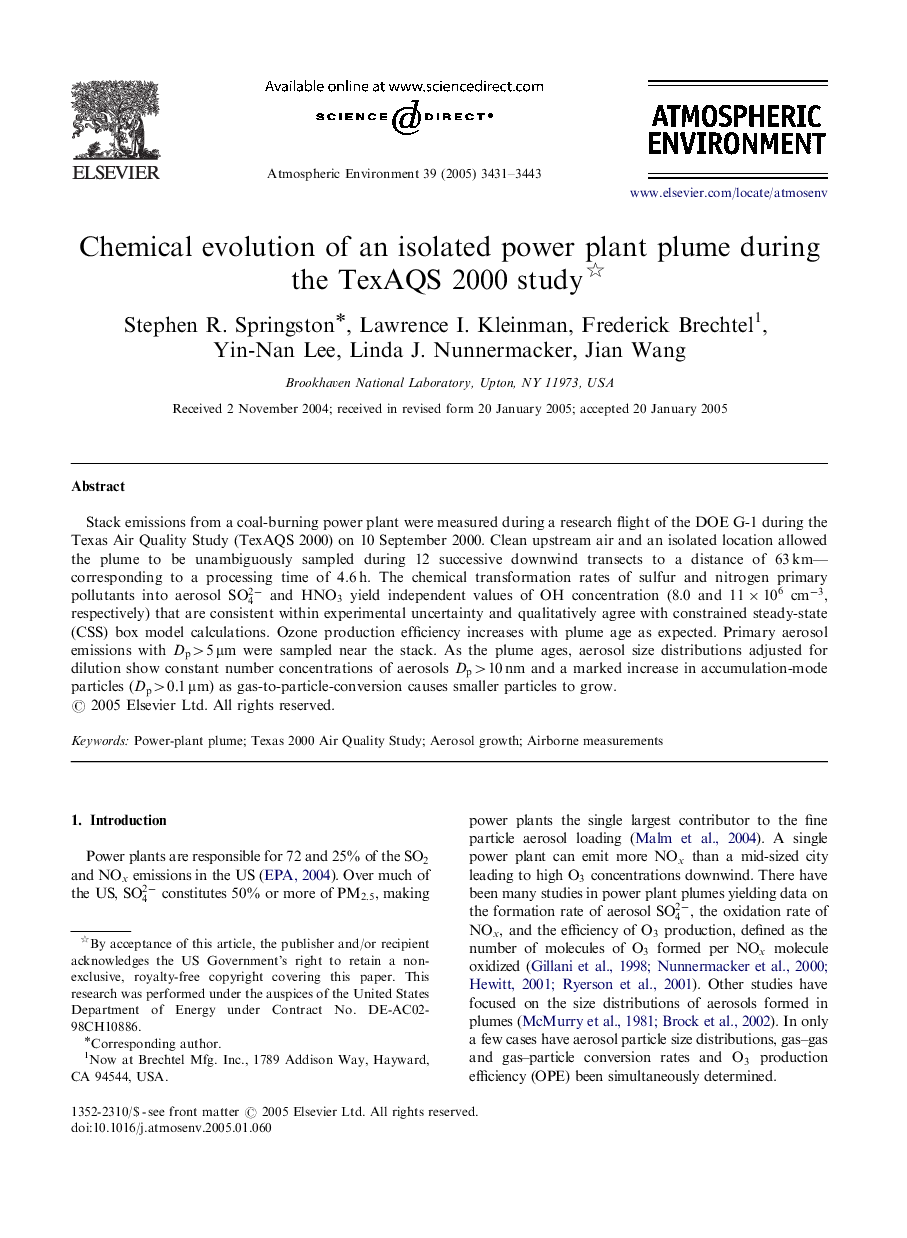| Article ID | Journal | Published Year | Pages | File Type |
|---|---|---|---|---|
| 4445501 | Atmospheric Environment | 2005 | 13 Pages |
Stack emissions from a coal-burning power plant were measured during a research flight of the DOE G-1 during the Texas Air Quality Study (TexAQS 2000) on 10 September 2000. Clean upstream air and an isolated location allowed the plume to be unambiguously sampled during 12 successive downwind transects to a distance of 63 km—corresponding to a processing time of 4.6 h. The chemical transformation rates of sulfur and nitrogen primary pollutants into aerosol SO42- and HNO33 yield independent values of OH concentration (8.0 and 11×10611×106 cm-3-3, respectively) that are consistent within experimental uncertainty and qualitatively agree with constrained steady-state (CSS) box model calculations. Ozone production efficiency increases with plume age as expected. Primary aerosol emissions with Dp>5Dp>5 μμm were sampled near the stack. As the plume ages, aerosol size distributions adjusted for dilution show constant number concentrations of aerosols Dp>10Dp>10 nm and a marked increase in accumulation-mode particles (Dp>0.1Dp>0.1 μμm) as gas-to-particle-conversion causes smaller particles to grow.
